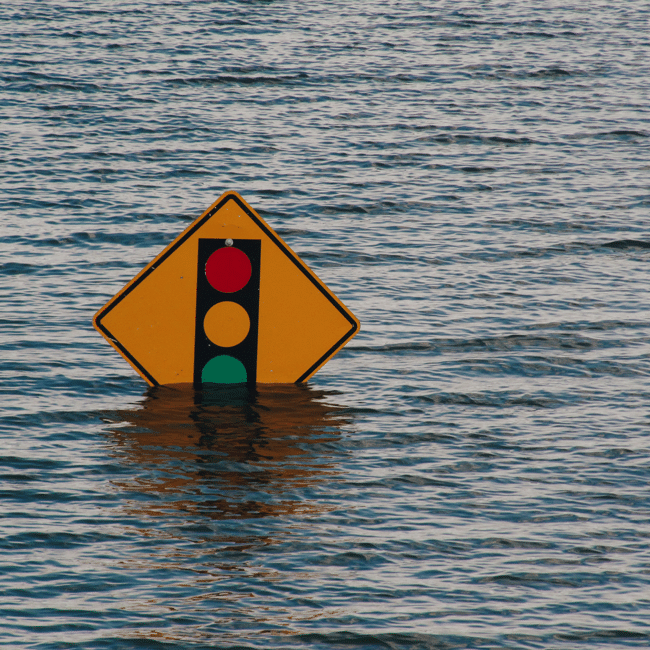Why it was wrong to kill Harambe

Why it was wrong to kill Harambe
Opinion + AnalysisClimate + Environment
BY Clive Phillips The Ethics Centre 2 JUN 2016
The killing of Harambe the gorilla at Cincinnati Zoo this week has aroused public sentiment in a way reminiscent of the public outrage caused by the killing of Cecil the lion.
This was not an isolated incident. On at least two previous occasions small children have accidentally fallen into gorilla pens. On both occasions the children were ‘protected’ by a prominent gorilla in the group, one female and one male, incidents which were heralded as examples of cross species animal altruism.
The incidents occurred in 1986 and 1991 in Jersey Zoo and Brookfield Zoo respectively – when rapid response teams would have been unknown. They demonstrate that gorillas are not dangerous animals.
This is further supported by the fact some witnesses’ reports said that Harambe was actually protecting the child and had not demonstrated any malevolence.
Animal behaviour expert, Professor Gisella Kaplan of the University of New England, has confirmed that gorillas are not inherently aggressive and would likely have not wanted to harm the child – a result of their social lifestyle and herbivorous diet.
Nowadays zoos have Dangerous Animal Response Teams, which in the ten minutes since the boy entered the enclosure made the decision to euthanise the gorilla. Members of this team are typically trained by the police to react to a dangerous animal threatening a member of the public.
Zoo animals already sacrifice many rights for the sake of human entertainment, education, conservation, and scientific endeavour.
Their first priority is for the safety of the public, then zoo staff. Only after these are assured is the animal’s wellbeing considered. As evidence of such a policy, Thayne Maynard, Director of Cincinnati Zoo, expressed public regret for the loss of Harambe as a future breeding male, a loss of genetic diversity, without any consideration for Harambe’s rights.
Zoos should have a policy based on an ethical appraisal of potential incidents based on higher level principles. These would include utilitarian, deontological, and virtue ethics principles.
From a utilitarian perspective, the harm caused by shooting Harambe, to him, his family, human witnesses, and the public generally, may have outweighed the small risk to the child. Harambe’s family will mourn his loss and may even have been traumatised by the event.
Deontologists would argue taking Harambe’s life would never be justified by the small risk to the child – the shooting constitutes a supreme example of a speciesist approach.
Insights from virtue ethics show how this incident has damaged the zoo’s reputation. Public outcry has accused the zoo of having little regard for the rights of its animal occupants – although the safeguarding of the child’s life may be welcomed by some future visitors. Is this the action we would expect of a ‘good’ zoo?
Instead, the zoo seems to have acted from self-interest, afraid of potential litigation should the child be harmed. From a commercial angle a seventeen year old gorilla is worth $100,000 to $200,000; a child’s life many millions. However, the zoo is likely to experience reduced visitor numbers for a prolonged period, as well as being responsible for damage to the reputation of American zoos more generally.
The zoo may also be liable for placing visitors in a dangerous situation, something not unheard of in zoos around the world. Owners of swimming pools in Australia could teach the zoos a lot about preventing small children entering facilities, with detailed regulations and strict monitoring minimising any risk to children.
Some zoos may have deliberately sacrificed safety for an enhanced visitor experience, with limited barriers between the public and apparently dangerous animals.
Harambe’s killing may yet prompt a renewed movement to provide legal recognition of the rights of great apes.
Zoo animals already sacrifice many rights for the sake of human entertainment, education, conservation and scientific endeavour. Our ‘contract’ with zoo animals, where we provide nutrition, good health, and companionship in return for the animals sacrificing their freedom, right to live, and reproduce naturally in a state of good welfare, stack the terms heavily in our favour.
Indeed, killing a defenceless animal that had not shown any aggression is tantamount to tearing up that contract.
The ethical dilemma over whether to shoot Harambe might have been avoided if a movement known as The Great Ape Project had succeeded. For over twenty years a group of philosophers, primatologists, and anthropologists have attempted to gain great apes, including gorillas, rights through the United Nations that would include the right to life.
The movement is based on overwhelming evidence for self-consciousness and other higher level cognitive abilities in great apes, which are undoubtedly greater than in some disabled humans who are adequately protected in law.
Although this has gained support in some minority states, it has yet to gain widespread acceptance, primarily because of determined opposition from scientists who reserve the right to use chimpanzees – another great ape – for medical research. Harambe’s killing may yet prompt a renewed movement to provide legal recognition of the rights of great apes.
Just like Cecil the lion, the killers of Harambe are being judged in the arena of social media. The pattern of argument there suggests members of the public would have preferred that the zoo accept some risk to the child before taking the extreme action of killing a harmless gorilla.
Ethics in your inbox.
Get the latest inspiration, intelligence, events & more.
By signing up you agree to our privacy policy
You might be interested in…
Explainer
Business + Leadership, Climate + Environment
Ethics Explainer: Ownership
Opinion + Analysis
Climate + Environment, Science + Technology
Space: the final ethical frontier
Opinion + Analysis
Climate + Environment, Relationships
“Animal rights should trump human interests” – what’s the debate?
Opinion + Analysis
Climate + Environment, Health + Wellbeing
Gen Z and eco-existentialism: A cigarette at the end of the world
BY Clive Phillips
Clive Phillips is Chair of Animal Welfare and Director of the Centre for Animal Welfare Ethics at the University of Queensland.
BY The Ethics Centre
The Ethics Centre is a not-for-profit organisation developing innovative programs, services and experiences, designed to bring ethics to the centre of professional and personal life.
Flaky arguments for shark culling lack bite

Flaky arguments for shark culling lack bite
Opinion + AnalysisClimate + Environment
BY Clive Phillips The Ethics Centre 10 SEP 2015
Culling sharks is unnecessarily harmful, disproportionate and will do little to protect humans.
The question of whether we should protect humans by culling sharks is not new. There are many parallels to the problems posed by land-based apex predators such as lions and tigers. The solutions we have adopted on land – including widespread culling – are unlikely to be either ethical or effective in dealing with shark attacks.
We must consider whether sharks offer humans indirect benefits. For example, sharks help control the seal population, which eats the fish we rely on for food and trade. Last winter, fishermen called for seal culls in South Australia because of the healthy fur seal population there.
People enjoy observing sharks in the ocean either directly through “shark tourism” or on TV. Discovery Channel’s “Shark Week” has become a cultural phenomenon in many nations. Apex predators hold a certain fascination – we marvel at their control of their territory. The awe we feel when viewing sharks is itself an indirect, unquantifiable benefit.
Even if these indirect benefits did not outweigh the risks to swimmers and surfers, this alone would not justify culling. We would have to consider whether the harms involved in controlling sharks are greater than the harms shark attacks cause to humans.
The numbers of sharks we would need to control for effective protection far exceeds the number of humans who benefit from controlling shark populations. Less aggressive forms of land-based controls for apex predators – for example, excluding lions from agricultural areas – are unlikely to work in the marine environment.
The numbers of sharks we would need to control for effective protection far exceeds the number of humans who benefit from controlling shark populations.
The practical outcome of this means many more sharks are killed than humans. In Queensland alone, about 700 sharks die per year in the culling program. By comparison, only one human has been killed – in an unbaited region.
In addition, baiting – a key tactic in the culling process – generates unintended harms such as “bycatching”. Baiting works on more than just sharks. It also lures turtles, whales and dolphins, which pose no threat to anyone. They are collateral damage in the war against sharks.
Netting beaches has been presented as a viable alternative to culling but here too there is risk of bycatch. Furthermore, netting leaves sharks to suffer and die slowly, giving rise to another raft of ethical concerns.
If culling is to be justifiable we need to consider the steps being taken to minimise shark suffering. Sharks captured on baited hooks suffer extensively, even when patrols detect and shoot injured sharks.
Let us suppose we could eventually devise ways of effectively stopping sharks entering the littoral zone by culling them in a way that minimised suffering. We would still have to consider the desirability of interfering in this way.
The long-term ethical consequences of destroying or reducing the population of an apex predator are considerable. The absence of apex predators in Australia has allowed an enormous kangaroo population to thrive. This population has had to be culled due to the competition they pose to domestic herbivores.
What’s more, the huge population means kangaroos face widespread starvation during droughts. The existence of apex predators may be bad for those caught in their path, but it is good for the entire ecosystem.
Human culling works contrary to the ‘natural’ culling apex predators perform. While predators prey on the weak and elderly, human culling targets the fittest or those with others dependent on them. As such it challenges the continuity of the entire species.
Many will argue that sharks have a right to occupy the territory in which they have evolved over millions of years, and this trumps the alleged right of humans to use territory they are ill-suited to and gain little significant benefit from. Certainly, many surfers respect these rights – acknowledging sharks as fellows in the ocean rather than threats or enemies.
The shark cull may in fact be exacerbating the shark problem in a cruel and ironic circle.
The sharks’ rights are enshrined in our law. Great Whites are an endangered species and therefore enjoy legal protection. Given the legal status sharks enjoy, the benefits to humans would have to be especially high to justify culling as an ethical option.
Surfers can adopt another sport if they are unwilling to assume the risk of shark attacks – and many are. This is particularly true if they are unwilling to explore cheaper, more reasonable ways of protecting themselves.
The shark cull may in fact be exacerbating the shark problem in a cruel and ironic circle. Sharks may be driven to attack humans because of the damage we have done to their environment. Shark experts argue that injured sharks on baited hooks attract other sharks to the area.
The elimination of apex predators such as Great Whites destroys millions of years of evolutionary adaptation. The ethical risks and costs of controlling the environment in this way are rarely contemplated in the face of tragic but rare fatal attacks. Instead of balanced reflection, we see knee-jerk responses that fail to adequately address the broad range of ethical issues.
Ethics in your inbox.
Get the latest inspiration, intelligence, events & more.
By signing up you agree to our privacy policy
You might be interested in…
Opinion + Analysis
Climate + Environment, Politics + Human Rights
Who is to blame? Moral responsibility and the case for reparations
Opinion + Analysis
Climate + Environment, Business + Leadership
We’re in this together: The ethics of cooperation in climate action and rural industry
Opinion + Analysis
Climate + Environment, Health + Wellbeing
Gen Z and eco-existentialism: A cigarette at the end of the world
Opinion + Analysis
Politics + Human Rights, Climate + Environment







